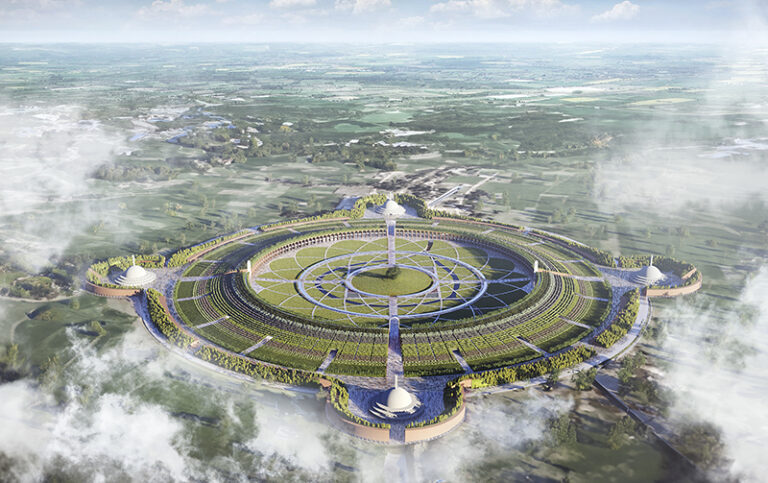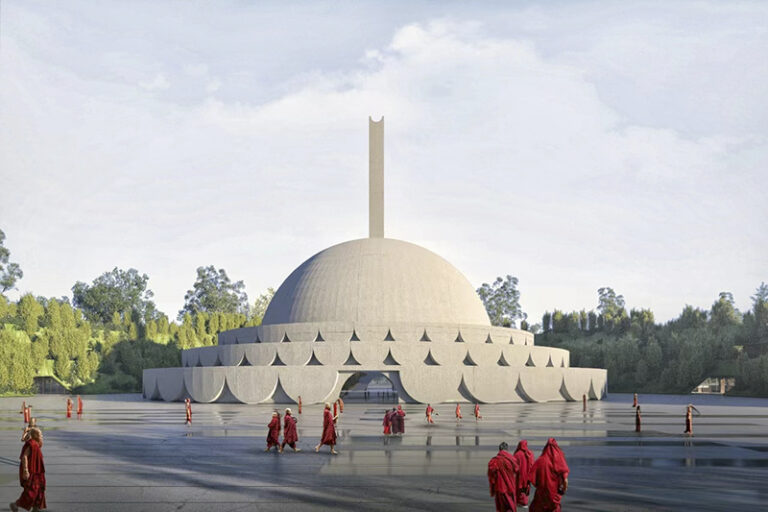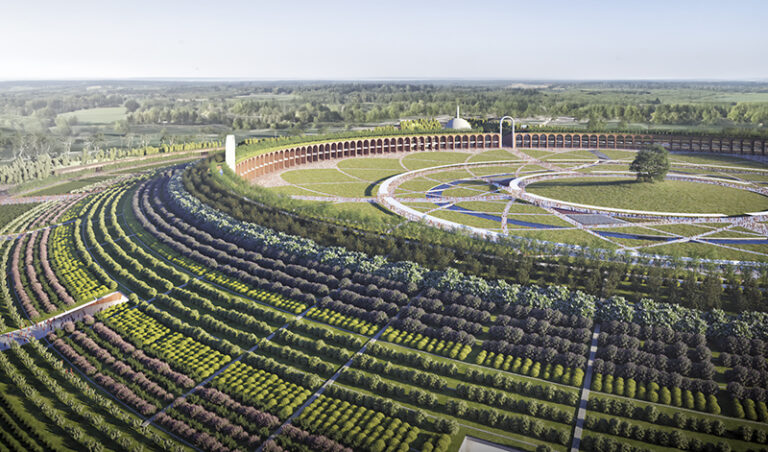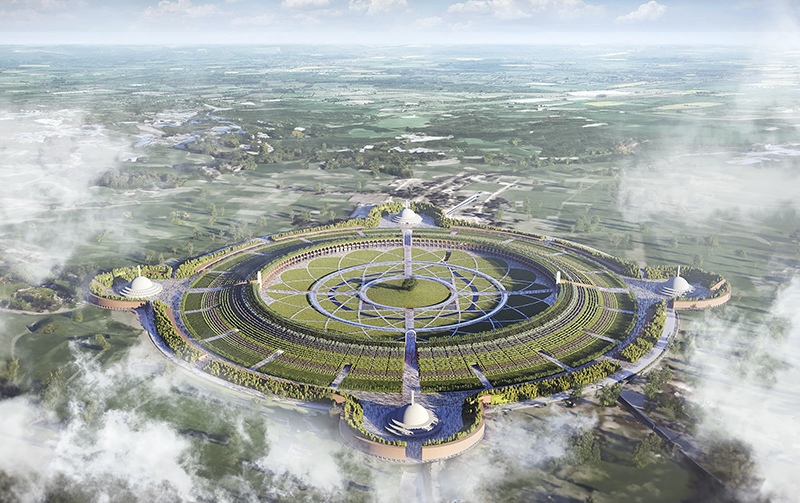
Reimagining Spirituality and Ecology: The Transformative Masterplan for Nepal's Ramagrama Stupa by Stefano Boeri Architetti
Nestled on the banks of the Jharahi River in Nepal’s Parasi district, the Ramagrama Stupa stands as a beacon of historical and spiritual significance in the Buddhist world. This revered site, just 50 kilometers east of Lumbini, the birthplace of Gautama Buddha, is undergoing a transformative rejuvenation. Stefano Boeri Architetti, a renowned international architecture and urban planning studio, has unveiled an ambitious masterplan that aims to meld the realms of prayer, meditation, and ecological harmony at this sacred location.
The Ramagrama Stupa, an archaeological gem dating back to the earliest periods of Buddhist tradition, is distinguished by a distinctive green mound topped by a majestic Bodhi Tree, under which rests an intact portion of Buddha’s relics. This site, revered for its profound cultural, historical, and religious significance, is being re-envisioned as a nexus of peace and biodiversity.

In a grand ceremony held in Lumbini, graced by Buddhist monks, Nepal’s Prime Minister, and various international dignitaries, Stefano Boeri Architetti presented their vision for the Ramagrama Stupa. The masterplan is a bold interpretation of the ‘stupa’, aiming to elevate its status as both an archaeological marvel and a sanctuary for spiritual practices.
Central to this visionary project is the Peace Meadow, a sprawling expanse designed for meditation and gathering, enveloping the Bodhi Tree and the Stupa. This space is not just a physical area but a manifestation of tranquility and reflection. Surrounding the Peace Meadow is the Biodiversity Ring Garden, a symbol of ecological consciousness and reverence for nature. This garden is a meticulously designed slope, housing an astonishing array of 80,000 plants from 70 different species, carefully selected to represent the native flora of the Terai plain, Buddha’s birthplace.

Stefano Boeri, the founder of Stefano Boeri Architetti, in his address, emphasized the unique challenge and honor of creating a meaningful center for peace in such a spiritually significant site. The design respects the rich symbolism inherent in Buddhist scriptures, proposing the Biodiversity Garden Ring as a testament to the unity and diversity in Buddhism. This project is envisioned to become a cultural heritage milestone in Nepal, showcasing a collaborative effort that transcends cultural and national boundaries.
The project respects the sacredness of the Stupa and the Bodhi Tree, maintaining a considerate distance to preserve the archaeological integrity and allow for future research. The design incorporates a gradual approach to the sacred site, starting from the four monumental access portals, each symbolizing a direction, leading up to the central hill. This journey through the portals to the hilltop is a metaphorical representation of a spiritual pilgrimage, enhancing the symbolic significance of the Stupa.
In line with the studio’s ethos of harmonizing nature with architecture, the masterplan includes the Peace Meadow, conceived as a contemplative open space. The ground design, inspired by the mandala, reinforces the spiritual and symbolic role of the location. The Biodiversity Ring Garden, with its circular elevated pathway shaded by trees, offers a panoramic view of the Stupa, fostering a deep connection with the natural surroundings.
The project also pays homage to the architectural legacy of Kenzo Tange, who crafted the masterplan for the Lumbini Museum in 1978. Embracing local materials and construction techniques, the new center for prayer and meditation will be an embodiment of sustainable design, echoing the local architectural heritage and minimizing environmental impact.

Stefano Boeri Architetti’s masterplan for Ramagrama Stupa is more than a mere architectural project; it’s a confluence of spirituality, ecology, and cultural heritage. It promises to transform the Ramagrama Stupa into a global symbol of peace, meditation, and ecological mindfulness, intertwining the ancient and the modern in a seamless tapestry of reverence and respect for one of Buddhism’s most sacred sites.
